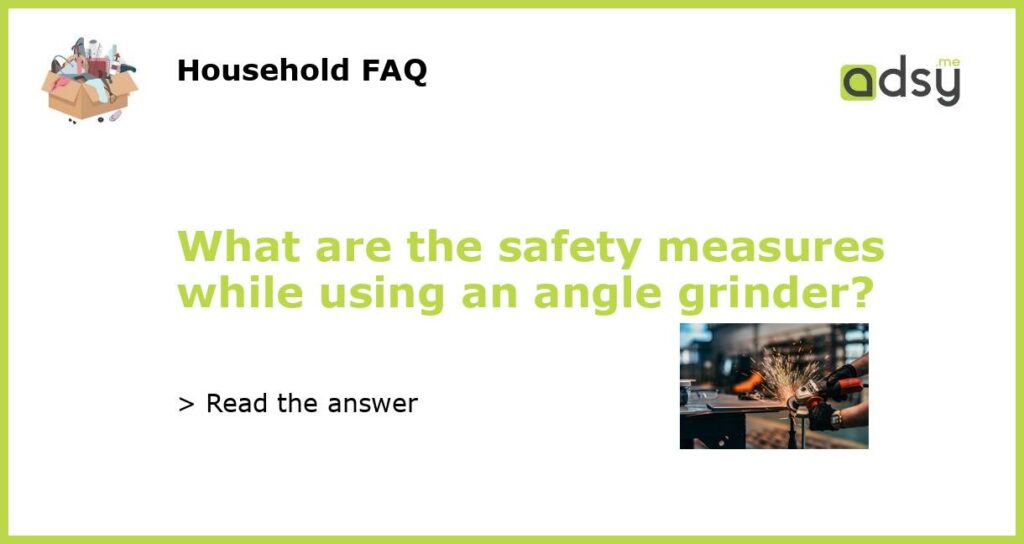Safety Measures to Consider When Using an Angle Grinder
An angle grinder is a powerful tool that makes cutting, grinding and polishing jobs easier. However, this tool can cause serious injuries if not used with caution. Here are five safety measures to consider when using an angle grinder:
Wear Protective Gear
Wearing the right protective gear is crucial when using an angle grinder. The gear includes gloves, goggles, a dust mask, hearing protection, and steel-toed boots. The gloves protect your hands from the abrasives and sparks while the goggles protect your eyes from flying debris. A dust mask reduces inhalation of dust particles, and hearing protection protects your ears from the noise produced during operation.
Read the User Manual
Reading the user manual is crucial before operating an angle grinder. It provides essential information on how to safely operate, lock and unlock the tool, adjust the guard, change discs and blades, and the risk associated with the tool. Understanding the manual will help you avoid hazards and maintain the tool.
Inspect the Grinder before Use
Before using an angle grinder, inspect it for defects like cracks and damage on the body, switch, handle and cord. Ensure that the disc or blade is correctly screwed or clamped and it is free from chips, cracks or nicks. Ensure that the guard is in place and securely tightened to prevent accidental wheel dislodging. For electric models, ensure the cord and plug are in good condition, and the switch is in good working condition.
Use the Grinder Properly
Ensure that you hold the grinder securely with both hands while operating it. The right hand holds the handle while the left hand holds the body of the tool. Do not force the blade or disc onto the workpiece. Let the tool do the work by applying light pressure to workpiece’s surface, avoid leaning on it. Do not use the side of the disc or blade for grinding, cutting or polishing. Do not use a tool that vibrates or produces unusual noise.
Keep the Work Area Clean and Organized
Keep the work area free from clutter, flammables like gasoline and solvent, and wet conditions. Ensure that there is enough lighting to see the workpiece well. Avoid working near electrical outlets or cords. Before starting the operation, inspect the workpiece to remove metals and foreign objects like nails and screws that can damage the blade or disc.






